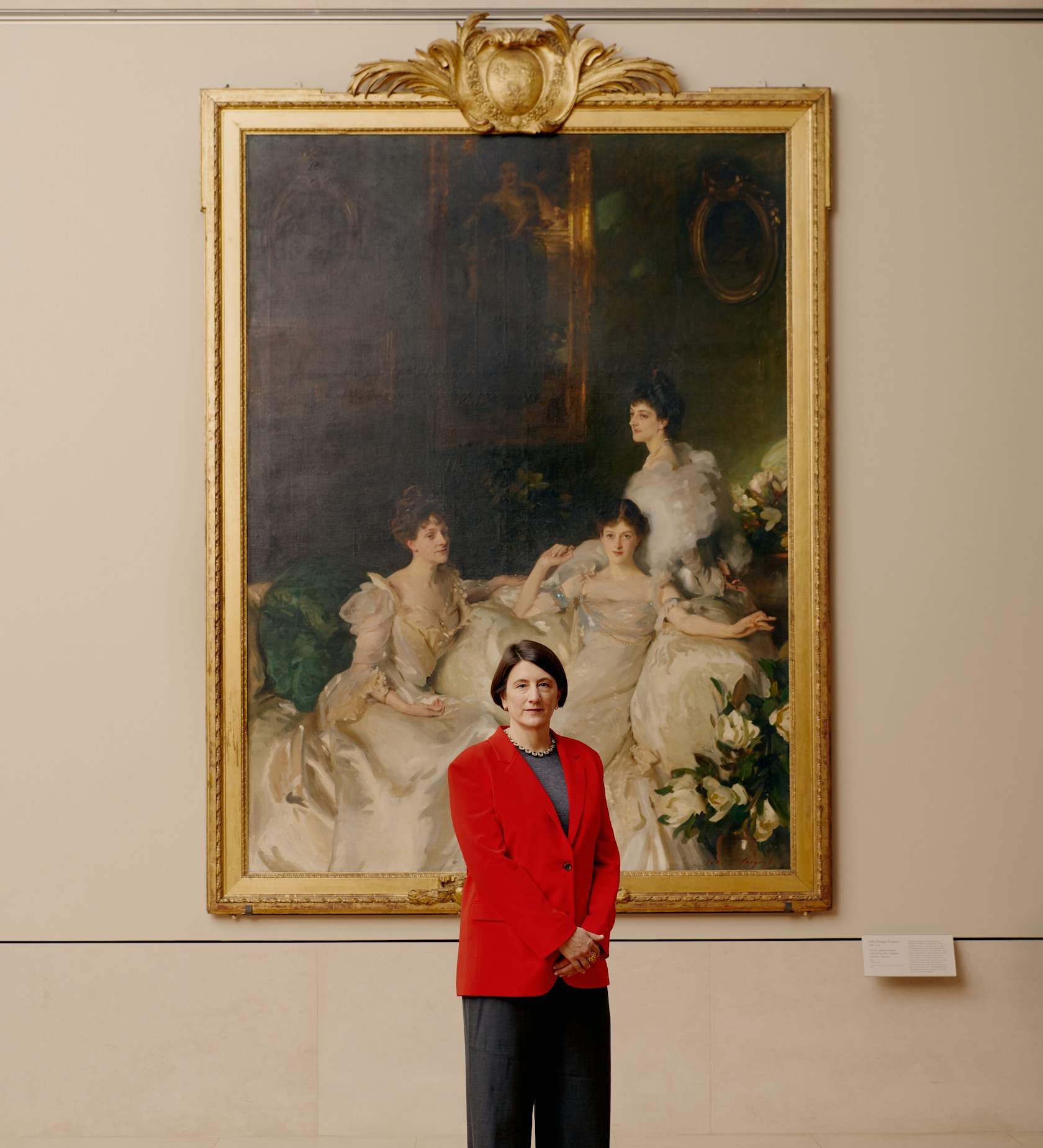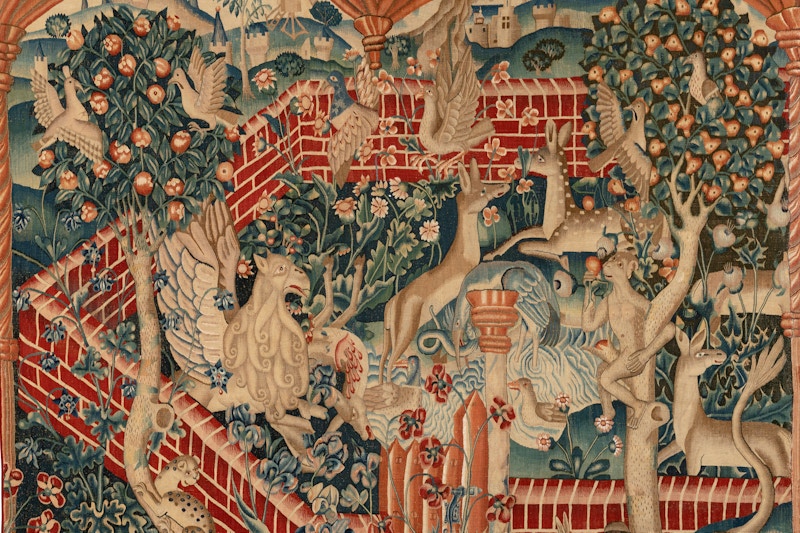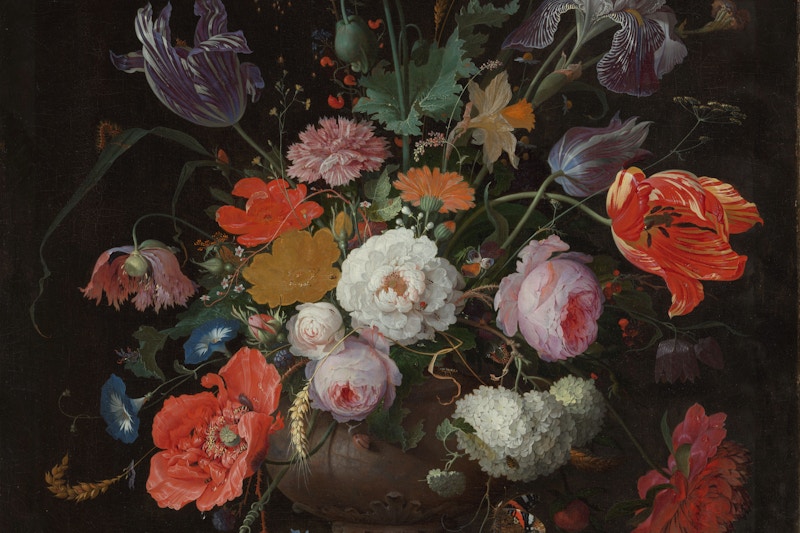
A Guide to the Upper East Side During TEFAF
Discover the cultural life of New York’s Upper East Side and five must-see destinations to explore during the fair from May 10 through May 14
- By TEFAF Editors
- Meet the Experts
In 2016, TEFAF found its second home at the Park Avenue Armory on New York City’s Upper East Side. TEFAF joined this active and vibrant center of the art market with its fair—focused on modern and contemporary art and design, ancient art, and jewelry—bringing the beauty and quality of TEFAF Maastricht to its home away from home.
The Park Avenue Armory, a National Historic Landmark, was built in the 19th century by the National Guard’s Seventh Regiment, which included some of New York’s most prominent Gilded Age families including the Vanderbilts, Van Rensselaers, and Roosevelts. Built between 1877 and 1881 as a military facility and social club, the Armory includes a 55,000-square-foot drill hall, a majestic entrance and staircase, and various reception rooms; its imposing façade evokes the fortified Italian palazzi from the 13th and 14th centuries. The Wade Thompson Drill Hall, reminiscent of the original Grand Central Depot and the great 19th-century train stations of Europe, was an engineering marvel of its time and one of the largest unobstructed spaces of its kind in the city. The reception and company rooms across the first and second floors were designed by the most prominent designers and artists of the American Aesthetic Movement at that time, including Louis Comfort Tiffany and Associated American Artists, Stanford White, Herter Brothers, Pottier & Stymus, and others. TEFAF New York remains the only art fair at the Park Avenue Armory to activate these period rooms with transformative exhibitor presentations. Situated on Park Avenue between 67th and 68th Streets, the Park Avenue Armory—and TEFAF New York—places visitors at the heart of the Upper East Side amongst some of the city’s most prestigious cultural and historical destinations.
“It is vibrant and thought-provoking, exhilarating, and sometimes even a little overwhelming,” says Stephanie L. Herdrich, the Alice Pratt Brown Associate Curator of American Painting and Drawing at The Metropolitan Museum of Art, on the city’s cultural life. Herdrich cares for part of the collection of The Met’s American Wing, which comprises some 20,000 works by Afro-American, Euro-American, Latin American, and Native American artists— Herdrich’s focus lies primarily on late 19th-century American paintings and drawings. Most recently, she was the co-curator of the exhibition Winslow Homer: Crosscurrents (2022) at The Met and National Gallery London. She is currently researching John Singer Sargent’s iconic portrait Madame X for an exciting project in 2025 that examines the artist’s remarkable early career in Paris.

Stephanie L. Herdrich, the Alice Pratt Brown Associate Curator of American Painting and Drawing at The Metropolitan Museum of Art. Photo: Vincent Tullo.
Herdrich’s experience of the cultural life of the Upper East Side is felt strongly at work: “At The Met, I feel part of an amazing cultural community. My colleagues across the museum are brilliant and creative—not only do we share a love of art, many of them are also talented artists themselves. One of the greatest parts of working at the museum is connecting with visitors from all over the world through our collections.” The museum includes period rooms from across eras and cultures—the American Wing’s collection alone includes a suite of 20 period rooms that span two centuries, from the earliest 17th-century Hart Room to the Frank Lloyd Wright Room from the early 20th century. “Saved from demolition in the 1970s, the living room from the Francis W. Little House in Wayzata, Minnesota (1912–14), is a gem of the Wing and one of my favorite rooms. It contains most of its original furniture and decor as conceived by Wright. Though the view through leaded glass windows is Central Park, not Minnesota, I always feel transported in time and space. Within just a few blocks, one can see this early Wright domestic Prairie House interior and his iconic late work, the Guggenheim Museum,” shares Herdrich.
Herdrich has also been a resident of the Upper East Side for over 30 years. “As in much of the city, you can experience the history of the neighborhood by studying the architecture and changing cityscape—from the older tenements further east to the Gilded Age mansions along Fifth Avenue. One of my favorite public art installations can be found on Madison Avenue between 78th and 79th streets: a black and white terrazzo sidewalk designed by Alexander Calder. Spring on the Upper East Side is particularly beautiful along Park Avenue when the cherry blossoms and tulips are at their peak,” says Herdrich.
“I love living near Museum Mile and having the ability to head into a museum or gallery for a short visit on a weekend afternoon.” As a curator of late-19th-century art, Herdrich particularly loves the Upper East Side museums located in Gilded Age and early-20th-century mansions, such as the Cooper-Hewitt, the Jewish Museum, the (soon reopening) Frick, and the Neue Galerie. “The Neue Galerie’s collection of early 20th century Austrian and German art is situated in the beautiful William Starr Miller House at Fifth Avenue and 86th Street. After visiting the collection, you can dine at Café Sabarsky on the main floor,” explains Herdrich.
There is something for everyone in New York City, Herdrich says: “All hours of the day, 365 days a year. From theater, art, and architecture to literature, music, and performances—there are inspired creators all around.”
TEFAF ́s Recommended Upper East Side Destinations

Photos: Vincent Tullo.
Albertine
972 5th Ave, New York
NY 10075
albertine.com
Housed in the historic Payne Whitney mansion—designed and constructed by famed architect Stanford White at the turn of the century—Albertine is the only bookshop in New York devoted solely to books in French and English. Alongside multiple publicly accessible treasures and highlights, the shop sits within Villa Albertine’s New York City headquarters, an arts institution launched by the French Embassy, which has been the steward of the mansion since 1952. Viewable upon entering the mansion is a copy of Cupid (ca. 1490), one of the earliest known works by Michelangelo Buonarroti created when the artist was approximately 15 years old. Housed at the mansion until the late 2000s, the original work is now on loan to The Met and on view in gallery 503. Another feature of the mansion is the Venetian Room, a receiving room imagined by White featuring 18th-century European furnishings and gilded Rococo frames.

Photos: Vincent Tullo.
Caviar Kaspia at The Mark Hotel
992 Madison Ave, New York
NY 10075
caviarkaspiany.com
Opened in early 2023, the New York location of Caviar Kaspia is one of the storied restaurant’s latest outposts, having opened in Paris’s eighth arrondissement in 1927—the same year the landmark building currently housing The Mark was built. With exquisite interiors by Jacques Grange, Caviar Kaspia at The Mark Hotel offers an exceptional menu of both caviar and non caviar-forward dishes, finely crafted cocktails, and a boutique including a selection of the finest caviars and gourmet accompaniments.

Photo: Vincent Tullo.
Fueguia
948 Madison Ave, New York
NY 10021
fueguia.com
Conceived as an homage to the history, art, music, nature, and local communities that distinguish the vibrant culture of South America, the pioneering perfume house Fueguia 1833 was founded in 2010 by Julian Bedel in Buenos Aires. The brand embraces the concept of ethnobotanical perfumery, combining scientific research with artistic exploration to create evocative, sustainable, and deeply personal scents. Every scent is created in a limited batch of 400 bottles using the finest natural ingredients available at the time of production, making each edition one of a kind.

Photos: Vincent Tullo.
Public Art on the Upper East Side
As one of the city’s great hubs for the art world, the Upper East Side has long been home to some of the world’s finest museums and galleries. Over the years, these destinations have attracted artists to activate public spaces with works that could, in some cases, almost go unnoticed. Stretching between 78th and 79th Street on the west side of Madison Avenue, Alexander Calder’s Sidewalk was commissioned in 1970 and stands to this day, including the artist’s signature “CA” and the year of the work if one looks closely. Look up further down Madison between 74th and 75th Street and one might spot one of Charles Simonds’s Dwellings—one of the miniature buildings the artist installed in 1981 to challenge the notion of a work of art as a discrete and precious object—on the second floor of 942 Madison Avenue. Crossing over to Park Avenue and heading north, Louise Nevelson’s towering Night Presence IV commands attention on 92nd Street. Given to the City by the artist in 1973, the work commemorates Nevelson’s 50th year of living and working in New York. Heading further east, one might encounter amongthe most recently installed artworks in this storied neighborhood—the Metropolitan Transportation Authority Arts & Design program featuring artworks by some of today’s most respected artists inside of the 96th, 86th, 72nd, and 63rd Street Q Train subway stations. Closest to the Park Avenue Armory, Vik Muniz’s murals (including this one of fellow artist JR) transform the subway station found at 72nd Street and 2nd Avenue. Other artists in the program include Jean Shin (63rd Street), Chuck Close (86th Street), and Sarah Sze (96th Street).

Photos: Durston Saylor and Jennifer Cooke. Courtesy of Bemelmans Bar.
Bemelmans Bar
35 E 76th St, New York
NY 10075
rosewoodhotels.com/en/the-carlyle-new-york/dining/bemelmans-bar
One of the Upper East Side’s most charming and timeless interiors, Bemelmans Bar at The Carlyle has captured the spirit of old New York with classic cocktails, scintillating jazz, and the warm glow of murals painted by one of childhood’s most legendary artists since 1947. Adorning walls throughout the space are murals by artist Ludwig Bemelmans, famed for both writing and illustrating the beloved children’s book Madeline. The book’s eponymous heroine makes an appearance throughout Bemelmans’s murals, which were painted in the 1940s at the bequest of the artist’s friend and then general manager of The Carlyle, Robert Huyot.


